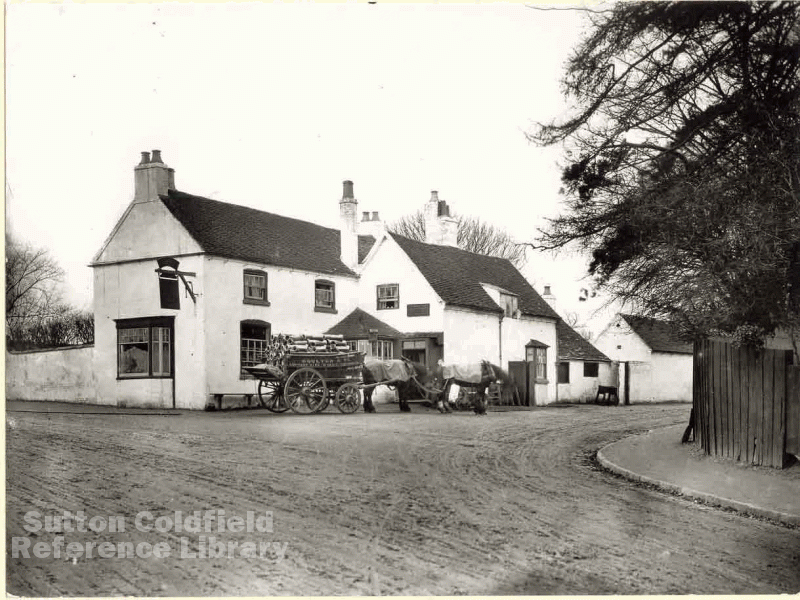In the eighteenth century the main road through Sutton was not very satisfactory - Mill Street was “a crooked road leading down to Skinner’s Pools”, Birmingham Road “straggled by Wild Green to a narrow lane leading across the Chester Road to Erdington”, and Lichfield Road was “a tortuous and narrow road”. The road was maintained by the Corporation of Sutton, the Warden and Society; on several occasions they paved and renewed High Street, and the road was probably better kept than these nineteenth century comments suggest. Minor roads were rutted and, in wet weather, deep in mud; where they crossed the extensive commons they were ill-defined tracks.
The main road was greatly improved at the beginning of the nineteenth century when it was taken over by a turnpike trust, and when the commons were enclosed in the 1820s, the tracks were replaced by properly made straight roads 30 or 40 feet wide. An increasing population brought greater demand for goods and services, meaning heavier traffic on the roads, and so “roadmen” were employed to fill in the ruts and strengthen the muddy places with hardcore. The main road was “disturnpiked” in the 1870s, and the Corporation devoted more attention and resources to improving the roads. The new Corporation of 1886 appointed a Highways Committee.
By 1900 most of the roads were in better condition, with kerbs and gutters and a good surface for wheeled vehicles, though, as the illustration shows, unpleasant for pedestrians. Traffic was still mainly horse-drawn, the horses’ hooves tending to churn up the gravel and the iron-bound wheels easily forming ruts in weak spots - road transport was still mainly a local affair, most serious journeys being made by railway.
1922 was a busy year for road improvements, the Borough Surveyor reported to the Highways Committee that they had achieved “the earliest date on which the tar-spraying work has been completed during the thirteen years the roads have been sprayed”, so there were no tarred roads before 1909. In 1922 the new Tamworth Road was completed, replacing the old crooked Tamworth Lane, and in October “the whole of the tarmac coating commenced in Chester Road at the Borough boundary is now finished as far as Court Lane; the remaining length of water-bound surface on this road to be done next year”.
Roads were partly funded by Warwickshire County and the Ministry of Transport, and the MOT notified Sutton in March 1923 that all the classified roads had now been numbered, Lichfield Road, which had been “P” was now the A38 “S”, Chester Road, became the A452, but Walmley Road was only a B road, the B4148, having previously been identified as “BY-BY”.
